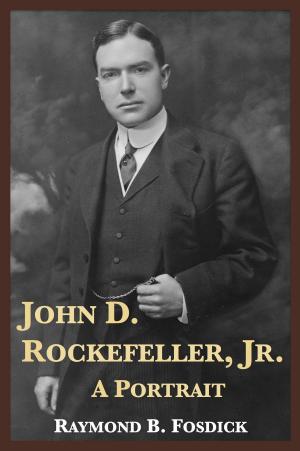Adepts in Self-Portraiture: Casanova, Stendhal, Tolstoy
Biography & Memoir, Artists, Architects & Photographers, Nonfiction, Art & Architecture, Literary| Author: | Stefan Zweig | ISBN: | 1230000036990 |
| Publisher: | Plunkett Lake Press | Publication: | December 6, 2012 |
| Imprint: | Language: | English |
| Author: | Stefan Zweig |
| ISBN: | 1230000036990 |
| Publisher: | Plunkett Lake Press |
| Publication: | December 6, 2012 |
| Imprint: | |
| Language: | English |
Adepts in Self-Portraiture: Casanova, Stendhal, Tolstoy by Stefan Zweig (translated from the German by Eden and Cedar Paul, with a chronology of Stefan Zweig's life and a bibliography of works by and about Stefan Zweig in English by Randolph Klawiter; 118,000 words)
Written in the 1920s, Zweig's work of literary criticism and biography might today be titled Masters of Memoir. In it, Stefan Zweig – one of the 20th century’s most widely-published writers – describes the creative process and work of authors for whom no subject is as compelling as the material of their own lives.
Adepts in Self-Portraiture examines the lives and work of three men who represent, in Zweig's view, three levels of development in autobiographical writing.
The first and most basic level is evinced by Giacomo Casanova, the Venetian womanizer who records his sexual and social conquests, adventures and escapes, without attempting to analyze or even reflect on them.
The second level of self-portraiture is exemplified by Stendhal, the French pioneer of psychological fiction, who kept voluminous notebooks on his own experience of life and on whom no nuance of feeling seems to have been lost.
Russian master Leo Tolstoy represents the third and highest level of autobiographical writing in which the psychological is imbued with the spiritual and ethical.
In Adepts in Self-Portraiture, Stefan Zweig examines the impulses that give rise to life writing and anticipates the current popularity of the memoir form.
Adepts in Self-Portraiture: Casanova, Stendhal, Tolstoy by Stefan Zweig (translated from the German by Eden and Cedar Paul, with a chronology of Stefan Zweig's life and a bibliography of works by and about Stefan Zweig in English by Randolph Klawiter; 118,000 words)
Written in the 1920s, Zweig's work of literary criticism and biography might today be titled Masters of Memoir. In it, Stefan Zweig – one of the 20th century’s most widely-published writers – describes the creative process and work of authors for whom no subject is as compelling as the material of their own lives.
Adepts in Self-Portraiture examines the lives and work of three men who represent, in Zweig's view, three levels of development in autobiographical writing.
The first and most basic level is evinced by Giacomo Casanova, the Venetian womanizer who records his sexual and social conquests, adventures and escapes, without attempting to analyze or even reflect on them.
The second level of self-portraiture is exemplified by Stendhal, the French pioneer of psychological fiction, who kept voluminous notebooks on his own experience of life and on whom no nuance of feeling seems to have been lost.
Russian master Leo Tolstoy represents the third and highest level of autobiographical writing in which the psychological is imbued with the spiritual and ethical.
In Adepts in Self-Portraiture, Stefan Zweig examines the impulses that give rise to life writing and anticipates the current popularity of the memoir form.















